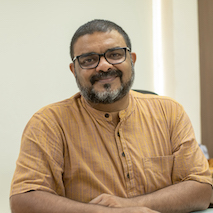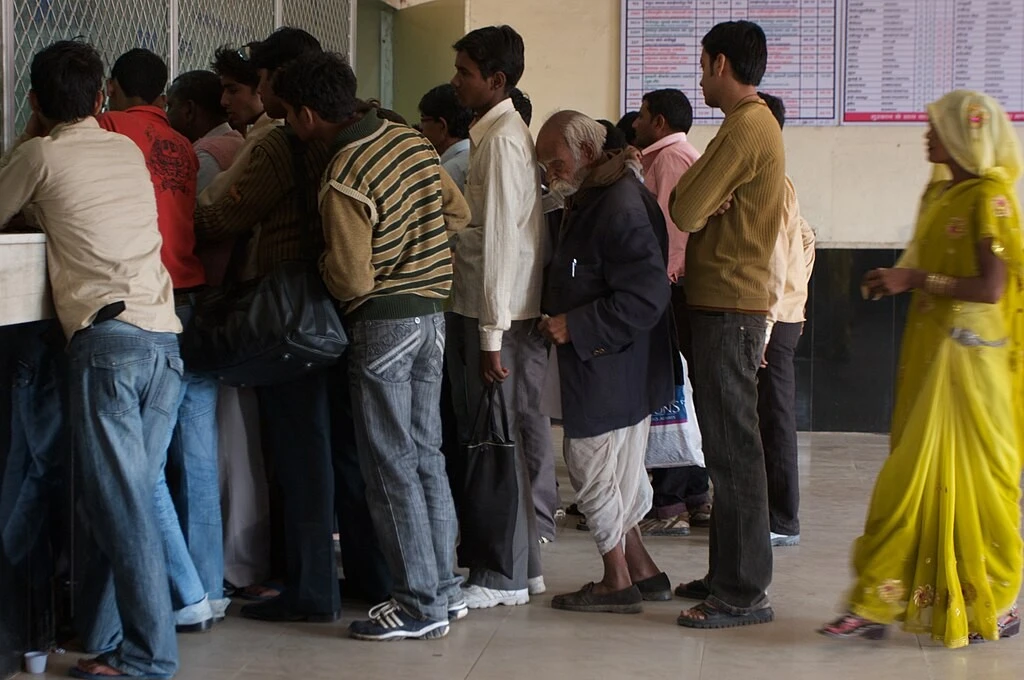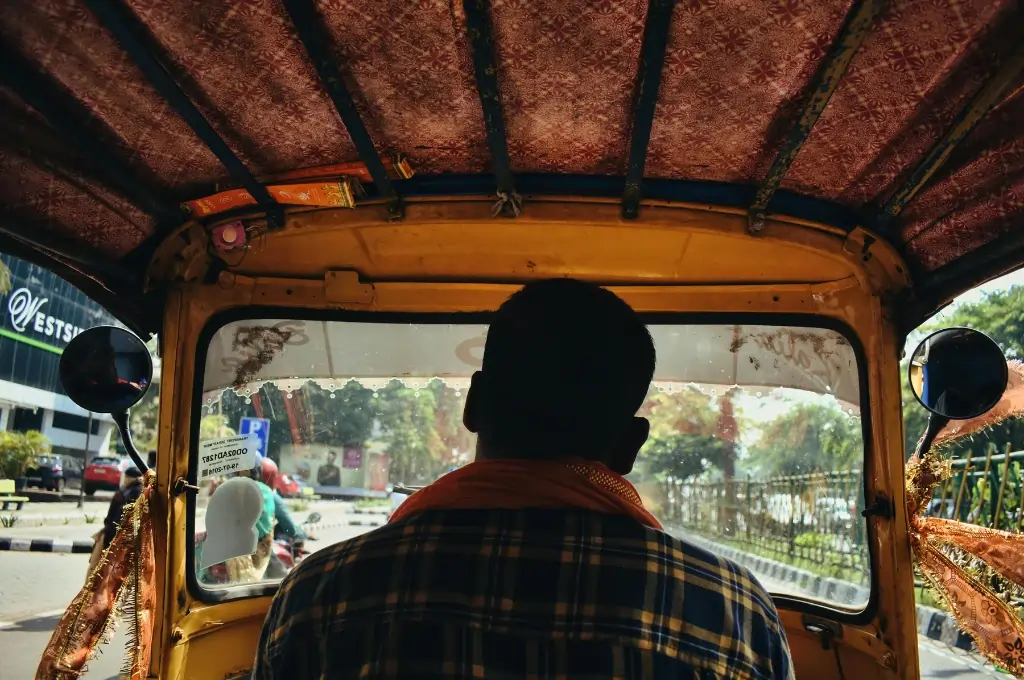The onset of the COVID-19 pandemic and the subsequent national lockdown in March 2020 illuminated the immensity of rural to urban migration in India and the true plight of migrant workers and their families. Migration for work has been a major coping strategy for the socially and economically disadvantaged communities from rural India.
What we have seen through our work with migrants is that development as a result of migration can impact the social and economic landscape of the region. Remittances contribute significantly to the resilience of rural India, benefitting not only the households that receive them, but also the entire village economy. The quality of life improves, private investments in human development through better education and healthcare multiply, productive resources find better use and increased yields, and so on. Moreover, such growth has the potential to be sustainable.
However, it is necessary to distinguish between distress migration and opportunistic migration. What differentiates the two is the level of control that the migrant has over the decision to migrate. A study on migration in climate-sensitive areas also differentiated between migration for coping and migration for adaptation—in other words, migration out of distress and migration for growth.


Since 2019, the Centre for Migration and Inclusive Development (CMID) and Gram Vikas have been working together to facilitate safe and dignified migration from the state of Odisha.
As part of this work, between 2019 and 2021, we conducted four independent empirical studies to estimate the monthly remittances received by households in select districts in Odisha prior to the national lockdown. These monthly remittances were sizeable, estimated to be INR 124 crore in Ganjam, INR 37 crore in Kalahandi, INR 15 crore in Gajapati, and INR 16 crore in Kandhamal. In the Thuamul Rampur block of Kalahandi district, the migrant remittances of INR 30 crore per year are equal to what the government spends under various rural development programmes.
The studies also revealed that most workers would prefer not to migrate if they could receive a regular monthly income of INR 10,000–12,000 from work at their native places. However, given the low levels of economic activity, this does not appear to be feasible in most parts of rural India in the immediate future. Moreover, emerging challenges such as climate change are likely to push more people to seek livelihoods elsewhere. Although migrants form the backbone of India’s bustling metropolitans and migration enables workers from rural regions to tide over their immediate crises, it comes at a cost to migrants and their households.
In most Indian states, the ration cards are not for individuals, but for households, which complicates matters.
While government policies provide an enabling environment, most of them have not made a substantial difference in the lived experience of migrants. For example, the Interstate Migrant Workmen Regulation Act (1979) mandates licences for contractors and registration for establishments for engaging workers outside their native states and offers several welfare measures for workers; these measures include a displacement allowance, journey allowance, wages equivalent to that of native workers, and wages without gender differentials. However, it has been of little use to migrant workers. Factors such as limited human resources within the department of labour at the receiving regions, poor enforcement of regulations, corruption, limited interventions by CSOs and trade unions, a lack of awareness, and the inability of migrant workers to negotiate for their rights are responsible for the same. Engaged as informal employees, these workers do not benefit from the employees’ state insurance or provident fund facilities either. Although the One Nation One Ration Card (ONORC) scheme offers portability (ability to access rations in any state in the country), it has not yet substantially helped migrant workers obtain rations in their work locations. Just as with most schemes, there has not been a substantial demand creation initiative, resulting in poor awareness among the potential beneficiaries. In most Indian states, the ration cards are not for individuals, but for households, which complicates matters. Even though the ration can be split between source and destination under ONORC, such sensitisation has not happened on a large scale.
Given that migration is likely to increase and that there are still many gaps when it comes to policy implementation, there is a clear role for nonprofit organisations to play in ensuring that the migration experience of families is safe, dignified, and inclusive. Based on our experiences of working on these issues through the pandemic, we have delineated a few key steps that nonprofits can take when working with migrants.

Interventions along the source–destination corridor
The corridor approach is cognisant of the entire process and experience of migration from the source to the destination, which helps identify the opportunities and challenges faced by the migrating worker, their family, and the larger community in both contexts.
Interventions that cover both source and destination regions have a larger impact compared to interventions that cover only one of them. The corridor approach helps facilitate interstate coordination and seamless access to services for the workers and their family members. This works well when an organisation has a presence at both the source and destination regions or through collaborations between organisations at the source and destination areas. For example, Aajeevika Bureau—a nonprofit that works in Rajasthan, Surat, Ahmedabad, and Mumbai—is able to cater to workers who move from rural Rajasthan to destinations such as Udaipur, Ahmedabad, or Mumbai.
Gram Vikas and CMID have been working together on a source–destination safe migration programme. When workers from Odisha’s Kalahandi district were unable to return to Kerala for work, Gram Vikas was able to bring migrants from different villages together and obtain travel insurances for them. On being informed about the migrants’ needs by Gram Vikas, CMID identified potential formal employment opportunities for the workers who were arriving. It also provided a vehicle for their travel from Odisha to Kerala, and the workers were tested for COVID-19 on arrival. Additionally, the workers were provided the requisite support to open bank accounts. If there was ever a grievance, it was addressed through synergistic efforts.
Build the programme on evidence
Evidence-informed interventions can substantially improve the programme response by ensuring better target efficiency and impact. In source areas, understanding the level of migration, differential migration rates by ethnicity, and the expectations of the workers can facilitate the construction of interventions. For example, research by Gram Vikas and CMID revealed that most workers from Kalahandi and Kandhamal move to Kerala, whereas workers from Ganjam primarily move to Surat. Such information can help organisations in source areas to explore collaborations at the respective destinations for the welfare of the workers who move from these areas.
Information delivered in the form of voice messages in their mother tongue can benefit workers who are illiterate.
At the destinations, being informed about the profile of the migrant workers can help in designing effective strategies to reach out to them. For example, information, education, and communication materials in print media will not benefit workers who are illiterate. However, voice messages in their mother tongue can reach such target groups. In Kerala’s Ernakulam district, workers from West Bengal constitute 40 percent of all migrant workers, those from Assam and Tamil Nadu constitute 20 percent each, and 12 percent of them are from Odisha. This information is pivotal for recruiting outreach workers and selecting an appropriate language to ensure effective communication with these populations.
Build cross-cutting partnerships
Public–private partnerships have a crucial role in ensuring the welfare of migrant workers. The benefits of such partnerships are especially evident when looking at healthcare for migrant workers in destination locations. The outpatient services at public health centres generally function during the migrants’ working hours, which makes it difficult for them to obtain free healthcare without losing the day’s wages. This forces them to obtain medicines over the counter from pharmacies after work hours. Often, these pharmacies provide medicine to such migrants without a diagnosis. Thus, a worker with tuberculosis may receive a cough syrup instead of referral for a sputum test that would lead to a TB diagnosis and appropriate treatment.
While CMID had the expertise in public health and the flexibility to work at a time convenient to migrant workers, it did not have the financial resources to operate a mobile clinic. Mangalore Refinery and Petrochemicals Limited (MRPL)—a public sector enterprise—offered CMID the funds to buy and customise a vehicle to be operated as a mobile clinic. Wipro Limited supported the operational expenditure for the mobile clinic under its CSR initiative; the expenditure included cost of human resources, medicines and consumables, and fuel for the vehicle. The National Health Mission (NHM) oversaw the technical aspects of the programme’s implementation, in addition to providing any available medicines and consumables. The NHM also facilitated linkages with public health institutions across Ernakulam to manage cases that required referral services/follow-ups. This enabled CMID to operate the Bandhu Clinic—a mobile clinic that provided free primary healthcare to workers post their working hours. The clinic catered to more than 40,000 migrant workers across several brick kilns, fishing harbours, plywood factories, fish processing units, industrial clusters, residential areas of footloose labour, and marketplaces in Ernakulam. The mobile clinics also helped the administration provide more than 70,000 migrant workers with access to COVID-19 vaccines.
Build customised facilitation mechanisms
Resource centres are of immense utility at the source as well as destination areas. In source areas, these centres can help potential migrants in the migration decision-making process and enable access to decent jobs by providing information about job opportunities and requirements. They can help workers plan their travel, book tickets, and obtain necessary documents such as COVID-19 vaccination certificates. They can also help with opening bank accounts and coordinate with local administrations to enable migrant workers to avail social security measures.
Gram Vikas operates a resource centre called Shramik Bandhu Seva Kendra near the Berhampur Railway Station in Ganjam district. A significant number of workers travel to various destinations within and beyond India from this station. The centre provides transit facilities to workers as they go to their workplaces or return home. In the Thuamul Rampur block of Kalahandi district and the Daringbadi block of Kandhamal district, a network of such centres provides access to information and documentation services to workers from remote villages. These centres have helped family members trace missing workers, secured release of workers who were forcefully detained by employers at the destination, and facilitated the return of the bodies of migrant workers who died away from home.
Opening bank accounts and facilitating the admission of children in Anganwadi and schools are among the services migrants can avail from resource centres at their destinations.
Destination-level resource centres help workers enrol in various social welfare schemes, document and file grievances with government departments, and follow up to ensure such grievances are resolved. Opening bank accounts, facilitating the admission of children in Anganwadi and schools, enrolling workers for vaccinations, and helping workers find a job or access legal aid are among the other services migrants can avail from resource centres at their destinations.
It is important to recognise that the migrant worker is not the only stakeholder in the migration process; the kin who stay behind are equally important. Their needs and challenges are always multidimensional, and so should be the resources that are built to support them. This requires working across multiple thematic areas and bringing together a diverse group of agencies. Panchayati Raj institutions, government departments, and services providers such as financial institutions, travel facilitators, skilling institutions, recruitment agencies, and resource centres for migrants are critical players at the source level. At the destination level, employers, industry associations, trade unions, media, and even the receiving society have a part to play.
—
Know more
- Read the paper that this article was based on to know what inclusionary interventions work for migrants at the grassroots.
- Read this article to understand how migrants from East UP coped with the consequences of the pandemic.





